Category: Recommended Reading
Of Anders & Kreuzwendedich
Sander Pleij in the European Review of Books:
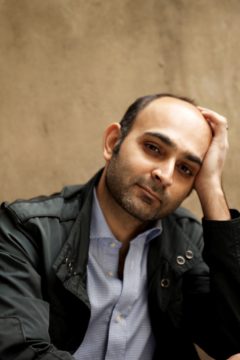
The opening scene of Mohsin Hamid’s The Last White Man riffs on Kafka’s Die Verwandlung (The Metamorphosis). Kafka’s first sentence:
Als Gregor Samsa eines Morgens aus unruhigen Träumen erwachte, fand er sich in seinem Bett zu einem ungeheueren Ungeziefer verwandelt.
So Gregor Samsa awakes in the morning, from troubled dreams, and finds himself transformed into a gigantic vermin. Hamid’s first sentence:
One morning Anders, a white man, woke up to find he had turned a deep and undeniable brown.
Hamid’s fairylike tale of a lover whose skin suddenly turns brown reminded me of another transformed lover, from a satire, written by an author who called himself Mynona. Der operierte Goy (The Operated Goy) was published exactly one hundred years before The Last White Man. The God of numbers is with us.
More here.
The future of weight loss
Stephan J. Guyenet at Works in Progress:
Heart attacks can be prevented with cholesterol and blood pressure drugs, bacterial infections can be eliminated with antibiotics, and even HIV is now treatable with antiviral drugs. But obesity remains a remarkably stubborn condition.
Losing weight is hard, with or without the help of a doctor. Two-thirds of American adults with obesity try to lose weight each year using every diet imaginable, yet the adult obesity rate remains at 43%. Even intensive diet and lifestyle interventions have historically struggled to exceed a sustained 5% loss of body weight, and most weight loss drugs are no more effective. Compounding the problem, primary care doctors often can’t deliver the best diet and lifestyle tools that are available. “I spent my career trying to get primary care providers to deliver effective weight loss interventions in their office,” says Donna Ryan, professor emerita at the Pennington Biomedical Institute and president of the World Obesity Federation. “It’s hopeless.”
Doctors understand the profound impact obesity has on their patients, and the remarkable benefits of even modest weight loss, but have historically been unable to do much about it.
That is changing.
More here.
Why I Am Not (As Much Of) An AI Doomer (As Some People)
Scott Alexander in Astral Codex Ten:
The average online debate about AI pits someone who thinks the risk is zero, versus someone who thinks it’s any other number. I agree these are the most important debates to have for now.
But within the community of concerned people, numbers vary all over the place:
- Scott Aaronson says says 2%
- Will MacAskill says 3%
- The median machine learning researcher on Katja Grace’s survey says 5 – 10%
- Paul Christiano says 10 – 20%
- The average person working in AI alignment thinks about 30%
- Top competitive forecaster Eli Lifland says 35%
- Holden Karnofsky, on a somewhat related question, gives 50%
- Eliezer Yudkowsky seems to think >90%
- As written this makes it look like everyone except Eliezer is <=50%, which isn’t true; I’m just having trouble thinking of other doomers who are both famous enough that you would have heard of them, and have publicly given a specific number.
I go back and forth more than I can really justify, but if you force me to give an estimate it’s probably around 33%; I think it’s very plausible that we die, but more likely that we survive (at least for a little while). Here’s my argument, and some reasons other people are more pessimistic.
More here.
GPT 4: Full Breakdown
Want To Live Longer? How Life Extension Industry Will Reboot Health, Wellness and The Economy
Dean DeBiase in Forbes:
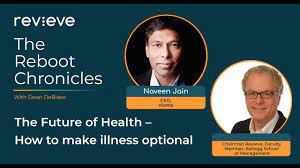 Do you want to live a better, healthier and longer life? Me too.
Do you want to live a better, healthier and longer life? Me too.
Lets go back to 1937, when Albert Szent-Györgyi won a Nobel Prize for his discovery of ascorbic acid—vitamin C—that enables the body to efficiently use carbohydrates, fats, and protein (I use it a lot during cold and flu season, you?). It was a massively consequential discovery, as it not only saved and extended countless lives, but it also contributed to the foundations of modern nutrition. Szent-Györgyi, himself, was blessed with a long life; he died in 1986 at the age of 93. But he might just as well be known for what he said on his 90th birthday: “I wish I could be 75 again!”
No doubt, that comment elicits more than a few eyerolls today. Especially since the CDC has recently downgraded American life expectancy to just 77 years. But could 75 someday be the new 40—an age by which, like Szent-Györgyi, we’re only hitting our stride? Well, if the burgeoning activity of the life extension industry is any indication, we may actually be on the cusp of making it so—and enjoying life to the fullest right up to the extended end. Which brings us to the morbid thought of mortality—that end state most of us seek to delay, if not dodge.
It may strike many as common sense that most causes of death are what we have come to understand as “age-related”: The longer we live, the more likely we are to develop, for example, heart disease, cancer, or Alzheimer’s. Therefore, a reasonable thing one can do to prevent the development of age-related diseases, is to, well, not age. It turns out that’s actually not as flippant as it sounds. So, is that possible and how do we get there?
More here.
The knowns — and known unknowns — of long Covid, explained
Dylan Scott in Vox:
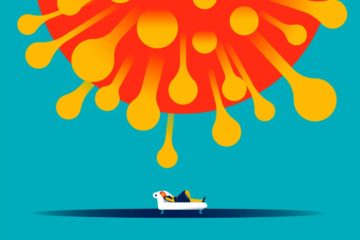 Three years since the beginning of the coronavirus pandemic in the US, the syndrome known as “long Covid” remains one of its chief mysteries.
Three years since the beginning of the coronavirus pandemic in the US, the syndrome known as “long Covid” remains one of its chief mysteries.
Those mysteries include what the syndrome even is. The long-term fatigue and brain fog some people report after recovering from an acute infection are the symptoms most commonly associated with long Covid, but more than 200 distinct symptoms have been reported. The novel coronavirus may also change people’s cardiovascular systems permanently in ways that could lead to long-term health problems, even strokes and heart attacks. Is it all long Covid? There are other elusive questions: How frequently do people get long Covid? Who is at the highest risk of developing it? And what is causing these long-term symptoms in the first place? The remaining uncertainties can mask the scientific progress of the past few years. Scientists have a better idea of how long Covid works, and why it might cause a wide array of seemingly unconnected symptoms.
But — and this is more important than it might seem — we know what we don’t know. We have a stronger sense of what the most important unanswered questions are and where there is genuine debate among even the experts about this bedeviling condition.
More here.
Tuesday, March 14, 2023
The Right to Grieve
Erik Baker in Jewish Currents:
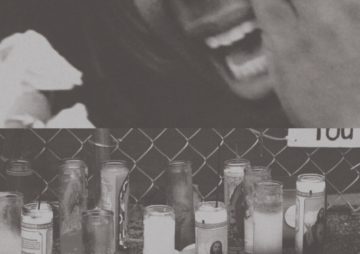 The truth is that American society has made persistent grief disabling, because the demands that grief makes on a person are at odds with the way that American capitalism expects people to comport themselves as workers. The normal worker, in our economic system, is a person whose ability to work is not impaired by grief—not someone who doesn’t experience loss, which would of course be impossible, but someone who simply doesn’t let it get to them. There is no statutory entitlement to bereavement leave in the United States, except in the state of Oregon. In fact, Department of Labor guidance on the Fair Labor Standards Act explicitly cites mourning as the example par excellence of unprotected non-work: Federal law “does not require payment for time not worked, including attending a funeral.”
The truth is that American society has made persistent grief disabling, because the demands that grief makes on a person are at odds with the way that American capitalism expects people to comport themselves as workers. The normal worker, in our economic system, is a person whose ability to work is not impaired by grief—not someone who doesn’t experience loss, which would of course be impossible, but someone who simply doesn’t let it get to them. There is no statutory entitlement to bereavement leave in the United States, except in the state of Oregon. In fact, Department of Labor guidance on the Fair Labor Standards Act explicitly cites mourning as the example par excellence of unprotected non-work: Federal law “does not require payment for time not worked, including attending a funeral.”
While the ideal worker under this regime is supposed to keep calm and carry on in the face of any loss, real workers experience grief all the time—in which case they must depend on the generosity of their bosses. Support is too often lacking.
More here.
Gigantic map of fly brain is a first for a complex animal
Miryam Naddaf in Nature:
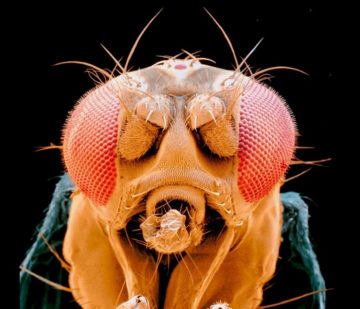 Scientists have generated the first complete map of the brain of a small insect, including all of its neurons and connecting synapses.
Scientists have generated the first complete map of the brain of a small insect, including all of its neurons and connecting synapses.
The research, published on 9 March in Science1, provides a brain-wiring diagram known as the connectome of a complex animal for the first time — the fruit fly Drosophila melanogaster. The map shows all 3,016 neurons and 548,000 synapses tightly packed in a young Drosophila’s brain, which is smaller than a poppy seed.
The map is a milestone in understanding how the brain processes the flow of sensory information and translates it into action.
More here.
Matt Taibbi addresses congress about the Twitter Files
The Mercy Workers
Maurice Chammah at The Marshall Project:
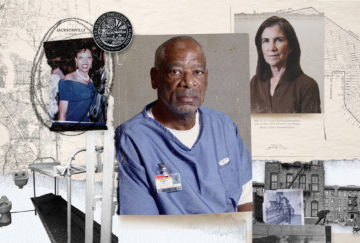 The United States has inherited competing impulses: It’s “an eye for an eye,” but also “blessed are the merciful.” Some Americans believe that our criminal justice system — rife with excessively long sentences, appalling prison conditions and racial disparities — fails to make us safer. And yet, tell the story of a violent crime and a punishment that sounds insufficient, and you’re guaranteed to get eyerolls.
The United States has inherited competing impulses: It’s “an eye for an eye,” but also “blessed are the merciful.” Some Americans believe that our criminal justice system — rife with excessively long sentences, appalling prison conditions and racial disparities — fails to make us safer. And yet, tell the story of a violent crime and a punishment that sounds insufficient, and you’re guaranteed to get eyerolls.
In the midst of that impasse, I’ve come to see mitigation specialists like Baldwin as ambassadors from a future where we think more richly about violence. For the last few decades, they have documented the traumas, policy failures, family dynamics and individual choices that shape the lives of people who kill. Leaders in the field say it’s impossible to accurately count mitigation specialists — there is no formal license — but there may be fewer than 1,000. They’ve actively avoided media attention, and yet the stories they uncover occasionally emerge in Hollywood scripts and Supreme Court opinions. Over three decades, mitigation specialists have helped drive down death sentences from more than 300 annually in the mid-1990s to fewer than 30 in recent years.
More here.
This Changes Everything
Ezra Klein at the New York Times:
 In 2018, Sundar Pichai, the chief executive of Google — and not one of the tech executives known for overstatement — said, “A.I. is probably the most important thing humanity has ever worked on. I think of it as something more profound than electricity or fire.”
In 2018, Sundar Pichai, the chief executive of Google — and not one of the tech executives known for overstatement — said, “A.I. is probably the most important thing humanity has ever worked on. I think of it as something more profound than electricity or fire.”
Try to live, for a few minutes, in the possibility that he’s right. There is no more profound human bias than the expectation that tomorrow will be like today. It is a powerful heuristic tool because it is almost always correct. Tomorrow probably will be like today. Next year probably will be like this year. But cast your gaze 10 or 20 years out. Typically, that has been possible in human history. I don’t think it is now.
Artificial intelligence is a loose term, and I mean it loosely. I am describing not the soul of intelligence, but the texture of a world populated by ChatGPT-like programs that feel to us as though they were intelligent, and that shape or govern much of our lives.
more here.
4 Tests Reveal Bing AI ≈ 114 IQ
https://www.youtube.com/watch?v=xFvDJnf0GXs&ab_channel=AIExplained
Is The Rectum A Cinema?
David Serlin at Cabinet Magazine:
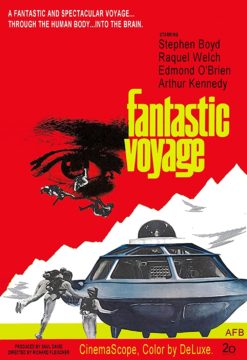 In Richard Fleischer’s 1966 film Fantastic Voyage, an elite crew of medical technicians—including the buxom but brainy Cora Peterson (Raquel Welch)—is shrunken down to microscopic size and climbs aboard the Proteus, a nano-sized submarine. The crew’s mission: to use a modified laser to destroy a blood clot on the brain of a dying scientist who holds important Cold War military secrets. Navigating their way through the dark, dangerous world of multicellular marauders and bacterial invaders, the crew of the Proteus spends a good amount of time on-screen peering out the windows in awe of the human body’s oceanic interior. Just after completing their assignment, and with valuable seconds ticking away, the crew of the Proteus is attacked by white blood cells. The survivors exit the body by riding out through a tear duct, cushioned in the saline safety of a single teardrop.
In Richard Fleischer’s 1966 film Fantastic Voyage, an elite crew of medical technicians—including the buxom but brainy Cora Peterson (Raquel Welch)—is shrunken down to microscopic size and climbs aboard the Proteus, a nano-sized submarine. The crew’s mission: to use a modified laser to destroy a blood clot on the brain of a dying scientist who holds important Cold War military secrets. Navigating their way through the dark, dangerous world of multicellular marauders and bacterial invaders, the crew of the Proteus spends a good amount of time on-screen peering out the windows in awe of the human body’s oceanic interior. Just after completing their assignment, and with valuable seconds ticking away, the crew of the Proteus is attacked by white blood cells. The survivors exit the body by riding out through a tear duct, cushioned in the saline safety of a single teardrop.
For all its retrospective camp value, Fantastic Voyage is also a fascinating cultural hybrid, the talented offspring of postwar American cinema and postwar American science.
more here.
Margaret Atwood’s ‘Old Babes in the Wood’ tackles what it means to be human
Gabino Iglesias in NPR:
 Margaret Atwood, without a doubt one of the greatest living writers, is best known for her incredibly successful and award-winning novels The Handmaid’s Tale and, more recently, The Testaments. However, she is also an extraordinary short story writer — and Old Babes in the Wood, her first collection in almost a decade, is a dazzling mixture of stories that explore what it means to be human while also showcasing Atwood’s gifted imagination and great sense of humor.
Margaret Atwood, without a doubt one of the greatest living writers, is best known for her incredibly successful and award-winning novels The Handmaid’s Tale and, more recently, The Testaments. However, she is also an extraordinary short story writer — and Old Babes in the Wood, her first collection in almost a decade, is a dazzling mixture of stories that explore what it means to be human while also showcasing Atwood’s gifted imagination and great sense of humor.
Old Babes in the Wood contains 15 stories, some of which have previously appeared in The New Yorker and The New York Times Magazine. The collection is divided into three parts. The first and last, titled “Tig & Nell” and “Nell & Tig,” revolve around a married couple and look, more or less, at their entire lives — what they’ve done and felt, the people that left a mark on them, their thoughts. These stories, which taken together feel like a mosaic novella more than literary bookends for a collection, offer a deep, heartfelt, engrossing look at the minutiae of life. The middle part, titled “My Evil Mother,” is perhaps the crowning jewel in this collection and brings together eight unique tales that vary wildly in terms of tone, voice, theme, and format. From imagined interviews and stories told by aliens to the circle of life and a snail trapped in the body of a woman, these tales show Atwood’s characteristic insight and intellect while also putting on full display her ability to make us laugh, her chronicler’s eye for detail, and her unparalleled imagination.
More here.
Aggressive Medical Care Remains Common at Life’s End
Paula Span in The New York Times:
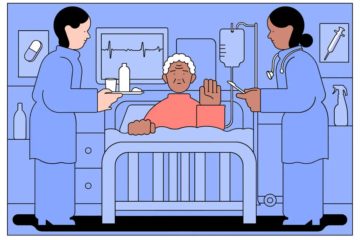 In July, Jennifer O’Brien got the phone call that adult children dread. Her 84-year-old father, who insisted on living alone in rural New Mexico, had broken his hip. The neighbor who found him on the floor after a fall had called an ambulance.
In July, Jennifer O’Brien got the phone call that adult children dread. Her 84-year-old father, who insisted on living alone in rural New Mexico, had broken his hip. The neighbor who found him on the floor after a fall had called an ambulance.
Ms. O’Brien is a health care administrator and consultant in Little Rock, Ark., and the widow of a palliative care doctor; she knew more than family members typically do about what lay ahead. James O’Brien, a retired entrepreneur, was in poor health, with heart failure and advanced lung disease after decades of smoking. Because of a spinal injury, he needed a walker. He was so short of breath that, except for quick breaks during meals, he relied on a biPAP, a ventilator that required a tightfitting face mask. He had standing do-not-resuscitate and do-not-intubate orders, Ms. O’Brien said. They had discussed his strong belief that “if his heart stopped, he would take that to mean that it was his time.”
More here.
Sunday, March 12, 2023
This Is a Philosopher on Drugs
Justin E. H. Smith in Wired:
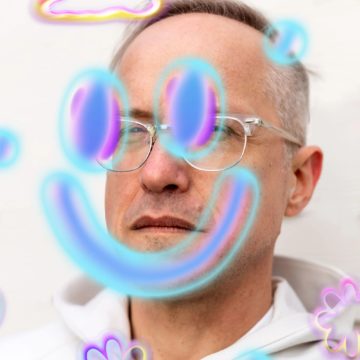 There is something strange in the disinterest philosophers show for experimentation with mind-altering drugs—or at least for talking about their experimentation publicly. At the margins of philosophical writing, we have Walter Benjamin’s record of his dabblings in hashish and Michel Foucault’s casual admission in interviews that he would rather be dropping acid in the Mojave Desert than sipping wine in Paris. Even further out we have philosophy-curious writers like Thomas de Quincey (also a biographer of Immanuel Kant) recounting his own experience of opium addiction. And then we have probabilities and speculation. The natural philosopher Johannes Kepler likely tried some fly agaric before writing his 1608 treatise of lunar astronomy, the Somnium (read it and you’ll see what I mean). The third-century Neoplatonist philosopher Plotinus might have availed himself of some herbal or fungal supplements to help him achieve his many out-of-body experiences, which he liked to call henosis, or “ecstatic union with the One.”
There is something strange in the disinterest philosophers show for experimentation with mind-altering drugs—or at least for talking about their experimentation publicly. At the margins of philosophical writing, we have Walter Benjamin’s record of his dabblings in hashish and Michel Foucault’s casual admission in interviews that he would rather be dropping acid in the Mojave Desert than sipping wine in Paris. Even further out we have philosophy-curious writers like Thomas de Quincey (also a biographer of Immanuel Kant) recounting his own experience of opium addiction. And then we have probabilities and speculation. The natural philosopher Johannes Kepler likely tried some fly agaric before writing his 1608 treatise of lunar astronomy, the Somnium (read it and you’ll see what I mean). The third-century Neoplatonist philosopher Plotinus might have availed himself of some herbal or fungal supplements to help him achieve his many out-of-body experiences, which he liked to call henosis, or “ecstatic union with the One.”
More here.
Springing forward into daylight saving time is a step back for health – a neurologist explains the medical evidence, and why this shift is worse than the fall time change
Beth Ann Malow at The Conversation:
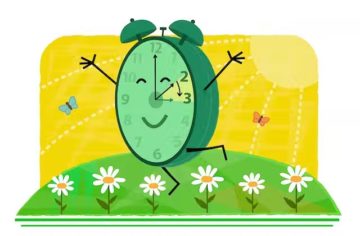 Researchers are discovering that “springing ahead” each March is connected with serious negative health effects, including an uptick in heart attacks and teen sleep deprivation. In contrast, the fall transition back to standard time is not associated with these health effects, as my co-authors and I noted in a 2020 commentary.
Researchers are discovering that “springing ahead” each March is connected with serious negative health effects, including an uptick in heart attacks and teen sleep deprivation. In contrast, the fall transition back to standard time is not associated with these health effects, as my co-authors and I noted in a 2020 commentary.
I’ve studied the pros and cons of these twice-annual rituals for more than five years as a professor of neurology and pediatrics and the director of Vanderbilt University Medical Center’s sleep division. It’s become clear to me and many of my colleagues that the transition to daylight saving time each spring affects health immediately after the clock change and also for the nearly eight months that Americans remain on daylight saving time.
More here.
Yuval Noah Harari: Israel Is on Its Way to Becoming a Dictatorship
Yuval Noah Harari in Haaretz:
 A “coup from above” occurs when a government that came to power in a perfectly legal way, violates the restrictions the law imposes on it, and tries to gain unlimited power. It’s a very old trick: First use the law to gain power, then use power to distort the law.
A “coup from above” occurs when a government that came to power in a perfectly legal way, violates the restrictions the law imposes on it, and tries to gain unlimited power. It’s a very old trick: First use the law to gain power, then use power to distort the law.
It can be very confusing when a “coup from above” takes place. On the face of it, everything looks normal. There are no tanks in the streets, and no general with a uniform sagging with medals interrupts the television broadcasts. The coup occurs behind closed doors, with laws being passed and decrees being signed that remove all restraints on the government, and dismantle all checks and balances. Of course, the government does not declare that it is carrying out a coup. It claims only that it is passing some much-needed reforms, “for the good of the people.”
How can we in Israel today determine whether we are facing a genuine reform or a coup? The simplest test is to ask: Are there still limits on the power of the government?
More here.
Your Literary Guide to the 2023 Oscars
Eliza Smith at Literary Hub:
 Sure, we’re a website about books, but that doesn’t mean we can’t get in on the Oscars fun, too. (Exhibit A: If they gave Oscars to books, our 2022 nominees.) And while there are few adaptations in this year’s lineup, we’ll still be tuning in on Sunday to celebrate storytelling, judge the Academy’s taste, and perhaps witness some live drama. In the meantime, we’re recommending the books and films you should read and watch next for each Best Picture contender.
Sure, we’re a website about books, but that doesn’t mean we can’t get in on the Oscars fun, too. (Exhibit A: If they gave Oscars to books, our 2022 nominees.) And while there are few adaptations in this year’s lineup, we’ll still be tuning in on Sunday to celebrate storytelling, judge the Academy’s taste, and perhaps witness some live drama. In the meantime, we’re recommending the books and films you should read and watch next for each Best Picture contender.
More here.
